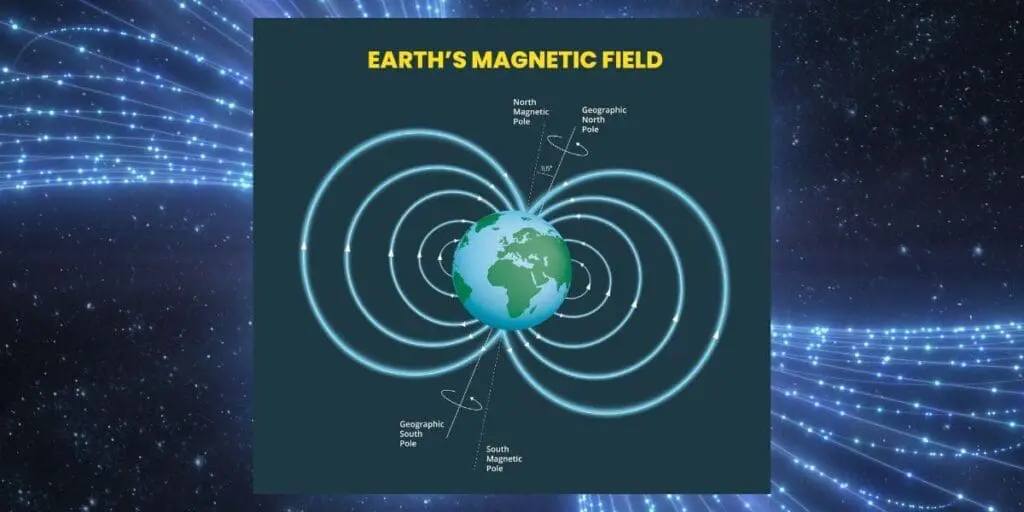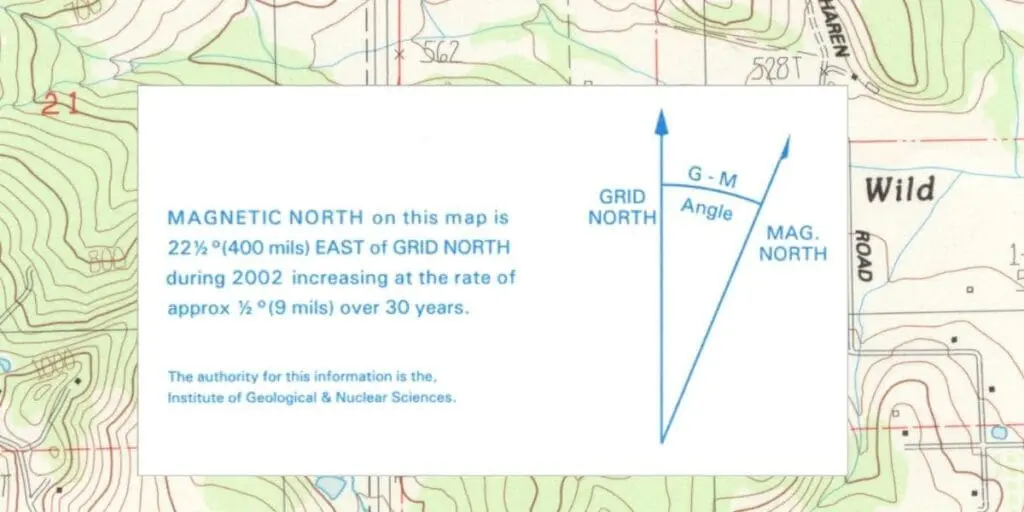Introduction to Magnetic Declination
Magnetic declination is a critical but often overlooked aspect of accurate navigation. It represents the angle between magnetic north (the direction your compass points) and true north (the direction along the Earth’s surface towards the geographic North Pole). Understanding this distinction is crucial for anyone who relies on maps and compasses for orientation, especially preppers, survivalists, and outdoor adventurers.
Navigating without accounting for magnetic declination can lead to serious errors in route planning and location pinpointing. For example, in some areas of the world, the declination can be as large as 20 degrees, which can translate into a substantial deviation over long distances. This makes understanding and adjusting for declination not just a skill but a necessity for those who venture into the wilderness or rely on precise navigation in their activities. Whether planning an expedition or ensuring readiness for emergency situations, mastering declination adjustments is essential for effective navigation.

The Science Behind Declination
The phenomenon of magnetic declination is influenced by both geological and solar activities, which affect the Earth’s magnetic fields. The liquid iron alloy in the Earth’s outer core moves and flows, creating convection currents due to heat escaping from the core. These movements generate electric currents, which in turn produce magnetic fields. As these conditions change, they alter the magnetic field and thus the position of magnetic north.
Additionally, solar winds and activities such as sunspots can also influence Earth’s magnetic fields. These external forces can cause temporary variations in magnetic declination, making it a dynamic and ever-changing value.
To measure and adjust for these variations, navigators use tools like the traditional compass or more modern GPS devices. A compass will always point towards magnetic north, not true north, necessitating adjustments based on current declination values for accurate navigation. Modern GPS devices can automatically account for declination based on your global position, providing an integrated solution for tech-savvy adventurers.
Understanding these scientific principles is not just academic; it’s a practical necessity for anyone involved in detailed route planning and navigation. By keeping informed about the forces that influence magnetic declination, navigators can ensure they are using the most accurate data to guide their journeys.

Grid North: A Crucial Component in Navigational Orientation
In the realm of precise navigation, understanding grid north is paramount alongside comprehending magnetic declination. Grid north refers to the direction of the grid lines on a map towards the map’s top edge, which may differ from true north and magnetic north depending on the map projection used.
When planning your route and aligning your compass with the map, it’s essential to account for the variance between grid north and magnetic north caused by magnetic declination. Failure to adjust for this misalignment can lead to significant errors in navigation, potentially veering you off course and complicating your journey.
Navigators must carefully assess the declination value and apply the necessary corrections to ensure that their compass aligns not just with magnetic north but also with the grid north indicated on the map. By factoring in the relationship between grid north and magnetic north through adjusting for declination, adventurers can enhance the accuracy of their navigational efforts and minimize the risk of getting lost in the wilderness.
Incorporating grid north into your navigation strategy, alongside a clear understanding of magnetic declination, empowers you to navigate with precision and confidence, thereby maximizing the effectiveness of your map reading and compass use in diverse terrains and environments.
Practical Application in Map Reading
Understanding Your Map and Compass
To effectively use a compass with a topographic map, one must first locate the declination diagram usually found in the map’s margin. This diagram indicates the current magnetic declination, which can be used to set your compass accurately. When navigating, it’s crucial to align your compass with the map’s orientation by adjusting for the local declination. This ensures that your compass’s magnetic north aligns with true north as indicated on your map, providing accurate directional guidance.
Step-by-Step Guide to Adjusting for Declination
Adjusting your compass for declination is a straightforward process:
- Determine the current declination from your map or an updated online source.
- If your compass has a declination adjustment feature, rotate the declination scale to match the local declination value.
- When navigating, ensure that your compass is flat and away from any metal objects to avoid interference.
- Align the compass needle with the declination adjusted grid on your map to find the correct heading.

For a practical example, consider navigating in Yellowstone National Park where the declination might be around 11 degrees east. Start at a known trailhead and adjust your compass to 11 degrees east. As you follow your map towards your next waypoint, keep your adjusted compass aligned with your intended path.
Regularly checking and updating declination values is essential because they can change over time due to shifting magnetic fields. By maintaining accurate adjustments, navigators can ensure that their expeditions are safe and successful.
Common Challenges and Misconceptions
Misconceptions About Magnetic Declination
One common error is confusing magnetic declination with magnetic inclination, which is the angle made by the Earth’s magnetic field with the horizontal plane. Another frequent misconception is the belief that magnetic north is static. In reality, magnetic north wanders due to changes in the Earth’s magnetic field. This misunderstanding can lead to significant navigation errors if outdated declination values are used.

Overcoming Challenges
Navigational accuracy can be compromised by environmental factors, such as the presence of large metal deposits or structures that can deflect the compass needle. This is particularly challenging in urban environments or mineral-rich areas where magnetic interference is common. To combat these issues, navigators should practice setting their compass away from metal objects and periodically calibrating their instruments.
Regular calibration and updates on declination values are crucial for maintaining navigation precision. Adventurers should make it a habit to check for updated declination values before any major expedition, especially in regions known for rapid changes in magnetic fields. Using reliable and current sources for this information, such as government or scientific publications, ensures that you are working with the most accurate data available.
By understanding these challenges and how to address them, navigators can enhance their skills and confidence in using magnetic declination effectively for precise and safe navigation.
Conclusion: Mastering Navigation with Declination
In mastering the art of navigation, understanding and applying magnetic declination is crucial. This knowledge ensures that your compass points you in the right direction, aligning with true north as accurately as possible. Throughout this discussion, we’ve explored the scientific background of declination, practical steps for adjusting your compass, and addressed common misconceptions and challenges that can affect navigational accuracy.
For preppers, survivalists, and outdoor adventurers, the ability to navigate effectively using a map and compass is not just a skill—it’s an essential part of ensuring safety and success in the wilderness. Regular practice in adjusting for declination, along with staying informed about changes in magnetic north, will enhance your navigation capabilities significantly.
As a call to action, consider engaging in an orienteering challenge or joining a local outdoor navigation course. These activities offer practical experience and can help refine your skills in real-world settings. Remember, the key to mastering navigation with declination is not just understanding the concept but also applying it consistently and accurately during all your adventures.
Stay safe, stay prepared, and let your compass lead you where you need to go—with the right adjustments, of course!

































